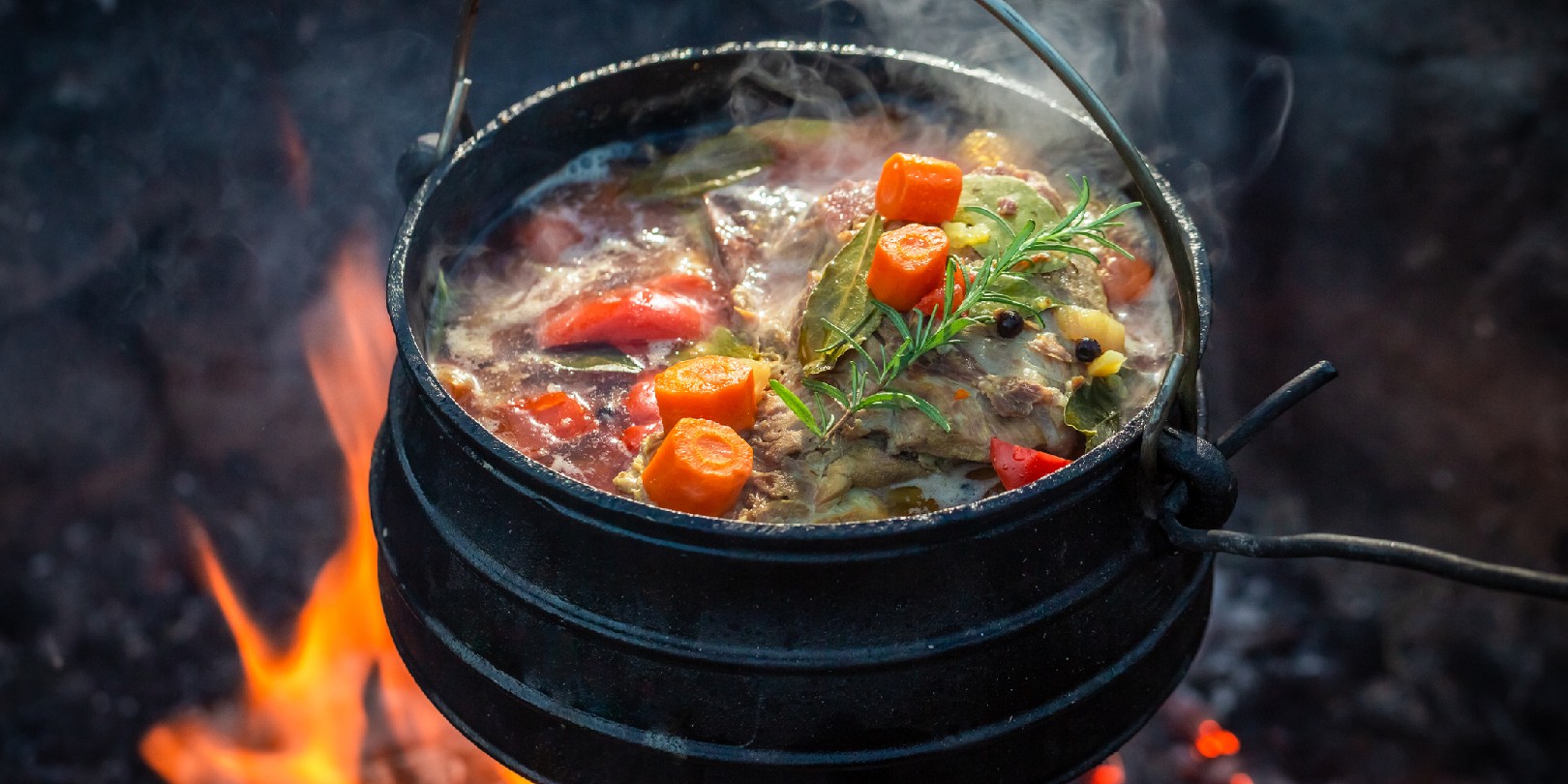The Dos and Don’ts of Campfire Cooking

Cooking over a campfire is an enjoyable activity that can take your outdoor experience to the next level. Whether you’re roasting marshmallows for a sweet treat or boiling water for a hot cup of coffee, campfire cooking is the perfect way to enjoy a delicious meal while basking in the beauty of nature.
But before you head out on your next camping trip, it’s important to know the essential do’s and don’ts of cooking over an open flame. In this post, we’ll be discussing everything you need to know about building a campfire, what utensils to bring, and how to safely prepare your food. With these tips and tricks, you can get the most out of your next journey through the wilderness.
Building a Campfire
Choosing Your Firewood
When selecting firewood for your campfire, look for dry, seasoned logs with no green colouration or sap. Avoid freshly cut wood since it won’t burn as effectively as seasoned wood does. Dry logs are important since damp wood contains more moisture which makes it harder to light and harder to maintain a steady flame for cooking.
Gathering Tinder and Kindling
Choose appropriate tinder and kindling in order to get your fire going quickly. Tinder is the stuff that will catch and hold your flame, such as paper or cardboard pieces, dried grass, or bark strips. Kindling is small sticks that will help the tinder burn longer and hotter. Make sure they are small enough to break into pieces easily but still large enough that they won’t blow away in the wind.
Placing Your Firewood
Once you have gathered your firewood, position the logs into a tepee shape with sticks of kindling crisscrossing each other within the tepee structure. This arrangement helps create a better airflow throughout the fire, allowing it to get going much faster and easier than if the logs were just piled on each other.
Lighting the Fire
Finally, light your campfire using a piece of tinder like paper or cardboard. Place your tinder in the centre of the wood pile, light it up with a match, and watch as your campfire takes shape!
Campfire Cooking Supplies
Cooking Utensils
Gather all necessary utensils for campfire cooking, such as tongs, and put them within reach so you can easily adjust food positions or move things around without burning yourself. It is also helpful to bring along rock gloves since they protect your hands from getting burnt when moving hot items from the fire.
Foil and Skewers
To make things easier while cooking over a fire, bring heavy-duty aluminium foil (for wrapping ingredients) and metal skewers (for grilling items). An excellent tip for wrapping in foil is to first place all ingredients onto a large sheet of foil, then fold it in half before sealing it tightly at all edges so that no flavours escape during cooking!
Spatula and/or Tongs
You’ll also want additional cooking utensils, such as a spatula or tongs on hand for flipping and/or moving food items while they cook over the open flames of your campfire. This will ensure food is cooked evenly and help prevent accidental burns from coming into contact with hot surfaces.
The Dos of Campfire Cooking
Bring Prepped Ingredients
Before heading out on any camping trip, prep all ingredients ahead of time so there’s less fuss when it comes time for cooking over the fire. This means pre-chopping any veggies or meats you want to cook and marinating anything you plan on grilling (like steak) before bringing them out camping. This helps reduce overall preparation time once you’ve set up shop at your campsite.
Utilize Hot Spots
As you start cooking over the open flames of a campfire, be sure to utilize hot spots like locations nearer to where flames are billowing up. These can provide higher temperatures necessary for grilling or searing certain foods, whereas cooler spots near edges will be best suited for simmering or boiling items like soups & stews.
Allow for Safe Movement of Food on Fire
For safety purposes, always use tools made out of non-flammable materials when moving food around on top of your campfire. This includes having extra skewers & foil sheets available so that any items that may have come into contact with flames can be removed immediately without risking burning yourself.
The Don’ts of Campfire Cooking
Don’t Bring Glass Containers
Containers like glass bottles or mason jars should never be brought near an open flame because they will shatter if exposed to sudden changes in temperature. So leave them at home if you’re planning on doing some intense outdoor cooking.
Don’t Cook Too Close To The Fire
When cooking over an open flame like a campfire, make sure not to get too close because this poses a risk of burning yourself. Keep an arm’s length away from hot surfaces and areas where embers may be flying up. This way, you can cook safely and still enjoy all those delicious charred flavours we associate with outdoor cooking!
Don’t Ever Leave A Campfire Unattended
Last but not least – never leave an outdoor campfire unattended. This could lead to potential hazards such as unattended children wandering too close and getting burns from open flames or sparks flying out from embers. So make sure someone is always watching over just in case anything goes wrong!
Conclusion
Campfire cooking is a fun and useful activity that can produce delicious savoury flavours when done correctly. Now you know how to build your own campfire, what utensils are needed for cooking, and what rules should be followed when you’re around an open flame. Bon appetite, and enjoy dining under the stars tonight!